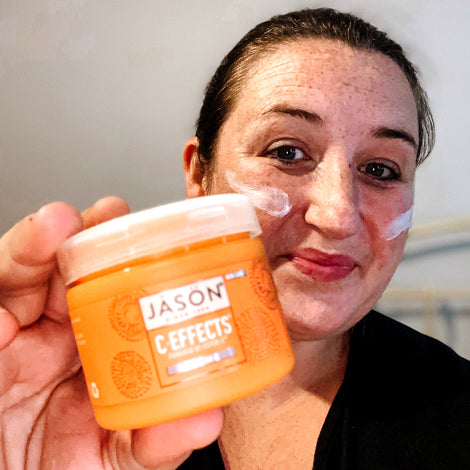
There are three main types of ultraviolet (UV) rays emitted from the sun: UVA, UVB and UVC. UVC is the shortest wavelength at 200 to 280 nm and has the potential to do the most damage, however it is all absorbed by oxygen in the ozone layer and none of these rays make it to the stratosphere. The two types of UV we need to concern ourselves with are UVA and UVB. UVA rays are long wavelengths (320-400 nm) and make up to 95% of the sun’s rays, and UVB are middle-length waves (290-320 nm). UVA rays penetrate deep into the dermis, whilst UVB rays tan the skin and can burn the superficial layers of your skin.
Unprotected exposure to UV rays can lead to premature ageing of the skin; which can display itself as fine lines, wrinkles, pigmentation and age spots. By damaging the skin’s cellular DNA, excessive UV radiation can lead to skin cancer. Both the U.S. Department of Health and Human Services and the World Health Organization have identified UV as a proven human carcinogen.
UV radiation is considered the main cause of nonmelanoma skin cancers (NMSC), including basal cell carcinoma (BCC) and squamous cell carcinoma (SCC). Many experts believe that UV radiation can also play a key role in melanoma, the deadliest form of skin cancer, particularly in fair-skinned people. Studies have also shown that UVA damages skin cells called keratinocytes in the basal layer of the epidermis, where most skin cancers occur.
Does Sunscreen Protect Me from UV?
In theory, yes, however a study has shown that on average we only apply 25-50% of the amount of sunscreen we are supposed to in one application[1]. We should apply at least 30ml of sunscreen with every all-over body application in order for our skin to be protected: the equivalent of a shot glass full. Obviously, if you only have hands, face and feet exposed the amount of sunscreen you require is significantly reduced, and the amount of sunscreen needed for little ones is less than this. Keep this figure in mind when stocking up for your summer holidays, or just for daily use as even on cloudy days up to 90% of the sun’s UV rays still penetrate your skin[2].
When Should I Apply Sunscreen?
It’s not just how much sunscreen you apply that’s important, it’s also when you apply and reapply it. You should be prepared and apply sunscreen twenty minutes before going out in the sunshine, and reapply at least every two hours. Most sunscreens these days have some kind of water resistance, so be sure to take this into account when hitting the pool or the sea.
If you have been unfortunate enough to burn, make a note of how long you were out in the sun without protection, and this is known as your burn time. The SPF of a product multiplied by your burn time is the number of minutes your sunscreen will protect you for before you have to reapply. For example, if you were out in the sun for five minutes not wearing sunscreen, with an SPF15 product applied would could stay out 15 x 5 =75 minutes without burning.
As a rule of thumb, wearing no SPF gives 0% UVB protection, whilst an SPF10 offers protection from 90% of UVB Rays, SPF15 93%, SPF30 97% and SPF50 99%. We’re often asked for the “Star Rating” of JASON suncare products, which refers to whether a product offers UVA and UVB protection. All JASON Sunscreens offer broad spectrum UVA and UVB protection, which puts the JASON sunscreens at between 4 and 5 stars.
Embrace the sun with broad spectrum protection
Protect yourself from harmful free radicals and UV rays with our selection of biodegradable, gluten-free and reef-friendly suncreams. These hypoallergenic creams not only protect and moisturise the skin, they are water resistant for up to 80 minutes.
Kids Sunscreen SPF45: Infused with soothing chamomile and calendula extracts, this formula is perfect for children's delicate skin.
Family Sunscreen SPF45: Enriched with vitamin E, shea butter and antioxidant green tea extract to nurture and moisturise the skin for the whole family. Tear-free formula.
Mineral Sunscreen SPF30: Enriched with chamomile which is both soothing and nourishing, this mineral cream won’t leave a white film on the skin.
Facial Natural Sunscreen SPF20: Enriched with specially selected antioxidants, including grape seed and green tea extract, this lightweight, non-comedogenic formula is ideal for everyday use.
BROAD SPECTRUM UVA/UVB PROTECTION | BIODEGRADABLE & REEF FRIENDLY
No: OXYBENZONE / OCTINOXATE / GLUTEN / SYNTHETIC FRAGRANCES / PARABENS
References
[1] Neale, R, Williams, G, Green, A. Application patterns among participants randomized to daily sunscreen use in a skin cancer prevention trial. Arch Dermatol. 2002 Oct; 138, 1319-1325.
[2] Global Solar UV Index. World Health Organization- http://www.who.int/uv/publications/en/UVIGuide.pdf










